 It was 18:41 local time on 15 August, 2007, when the devastating earthquake struck Peru.Millions of people felt the tremors that lasted for two-and-half minutes.The city of Pisco was close to its epicentre, and in its main place of worship, the San Clemente church, a congregation of some 250 had gathered for a special mass marking one month since the death of a local man.In seconds, the church roof had caved in, killing some 200 members of the congregation.Standing in the wide open space where San Clemente used to be, Father Alfonso Ferrada explained how he was near the altar at the moment the roof collapsed."It was so strong that I thought the Earth would swallow me up, the lights went and at that moment something fell and hit me on the arms, knocking me backwards, then the roof caved in," he says."If I had stayed on my feet I would have been squashed to death. By falling on my back I was saved and here I am."When I saw how many people died here and the destruction of the city with 90% of the homes flattened, the first thing I did was cry, cry from a sense of impotence," he says. "But we had to react; to dig out the dead and the injured. There was little time to think of anything else, only stay alive and fight and we are still doing that now," he adds.It is six months on, and Pisco's main square is a hive of activity.Old men sit around chatting, street vendors circulate and young couples and family groups stroll around holding hands.Standing there, I am happy to see that it has been revitalised.I remember, half a year before, the dust mingled with the unmistakeable smell of death.In the first few days, the plaza became an open-air morgue. Later on, the smell wafted across the plaza every time a huge refrigerated container was opened for a new body.
It was 18:41 local time on 15 August, 2007, when the devastating earthquake struck Peru.Millions of people felt the tremors that lasted for two-and-half minutes.The city of Pisco was close to its epicentre, and in its main place of worship, the San Clemente church, a congregation of some 250 had gathered for a special mass marking one month since the death of a local man.In seconds, the church roof had caved in, killing some 200 members of the congregation.Standing in the wide open space where San Clemente used to be, Father Alfonso Ferrada explained how he was near the altar at the moment the roof collapsed."It was so strong that I thought the Earth would swallow me up, the lights went and at that moment something fell and hit me on the arms, knocking me backwards, then the roof caved in," he says."If I had stayed on my feet I would have been squashed to death. By falling on my back I was saved and here I am."When I saw how many people died here and the destruction of the city with 90% of the homes flattened, the first thing I did was cry, cry from a sense of impotence," he says. "But we had to react; to dig out the dead and the injured. There was little time to think of anything else, only stay alive and fight and we are still doing that now," he adds.It is six months on, and Pisco's main square is a hive of activity.Old men sit around chatting, street vendors circulate and young couples and family groups stroll around holding hands.Standing there, I am happy to see that it has been revitalised.I remember, half a year before, the dust mingled with the unmistakeable smell of death.In the first few days, the plaza became an open-air morgue. Later on, the smell wafted across the plaza every time a huge refrigerated container was opened for a new body.Families devastated
The patch of open sky where the white colonial church once stood is a stark reminder of the grief and trauma so many Pisquenos - as the townspeople are known - are still living with.More than 500 people were killed in the 7.9 magnitude earthquake, and of those, 355 were in Pisco.Dora de Quiroga Espino, 76, and her family were inside San Clemente church, attending the service in memory of her husband, Alejandro Espino. She lost 40 relatives in the earthquake, including three of her 10 grandchildren.Her husband was a popular local man and the church was packed with friends, relatives and well-wishers."I told my son to leave me as I was buried up to my waist in rubble, but he gave me the strength and courage to get out alive," she says."'Do it for my father," that's what my son said to me."She was pulled through the remains of the collapsed roof, and she thanks God that she and her seven children survived.But inside the remains of her house, patched up with interwoven bamboo panels, the sense of grief hangs heavy in the air.Two of her daughters visit. One of them lost both her infant children in the church. Her loss is so senseless and inexplicable she can barely bring herself to speak.Dora says she has not received any help from the government."The only people who've visited me are journalists," she says.
Slow recovery
Patience is wearing thin.Although some families now have temporary pre-fabricated houses, thousands are still living in tents, which become unbearably hot in the desert heat, and most of them are waiting for a government payout of 6,000 soles (£1,000; $2,000) to buy materials to build new homes. The trouble is that many people have no official registration of home ownership or record that they owned the land they lived on before their homes were destroyed. Without it, they are trapped in a bureaucratic deadlock."The speed of the reconstruction is not as fast as we would have liked," admits the Minister of Social Development, Susana Pinilla."We can't allow building on land when we don't know who it belongs to. Someone will claim land then the neighbour will say it belongs to him. We wouldn't know who to believe," she says."We realise there is too much bureaucracy, but there are some people who want to profit from this disaster and claim land in order to sell it," she warns.A government-backed public-private partnership, the Fund for the Reconstruction of the South (Forsur) has been heavily criticised for its slowness and inefficiency at bypassing the notoriously bureaucratic state institutions it was created to avoid.
'No future'
Sara Gonzalez is 21 years old and eight months pregnant.Her family is one of 35 camped out on a patch of land next to a football stadium in the fishing village of San Andres.They have lost the homes they rented, and the prices have now doubled. They are unwilling to relocate inland as the men are mostly fisherman. "I can't see any future for us. If someone was to give us some land we could start anew, but we are just stuck here. We haven't received anything from the government," says Ms Gonzalez.The families live in makeshift shelters made of plastic sheeting. There is no running water and they have to share two portable lavatories. They get their food at an "olla comun" or soup kitchen.Dr Benino Moyeyra is a director of a mission of Cuban doctors in Pisco. He believes the authorities are trying their best."I think the authorities are concerned about Pisco. The damage which was caused was very great and there are 120,000 residents here, most of whom lost their homes. It's an enormous task and for all that's been done, there will always be more to do," he says.Father Alfonso says there has been a lack of unity. Instead, there has been infighting and rivalry between the central and regional governments.Each wants to "present itself as the saviour", he says, "but the city can't keep on waiting for help from outside"."It needs to start working from the inside out, with the help of the authorities, but the people here need to start taking charge," he concludes.
As in the days of Noah....
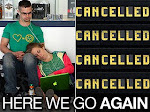
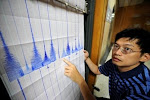
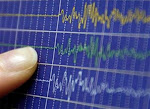
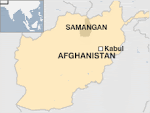







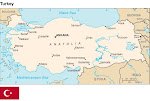
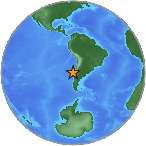




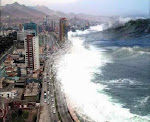

.jpg)


.bmp)
No comments:
Post a Comment